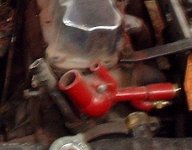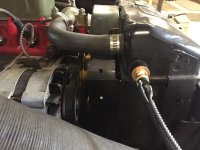CraigCootsona
Member
Offline
Hello all,
I have a 59 sprite with a 1275 (pre emissions model) and I would like to re-arrange the temperature sensor routing a little. I currently run with an electric fan whose thermostat is piped inline between the heater box and the on-off valve on the head. . . I know, not the best spot because of the risk of shutting that valve but I never close this valve. In the interest of a little more accurate sensing I would like to pipe the sensor directly into the threaded hole in head but can't find the correct thread size for the plug that is currently there. The plug is located at the front side of the cylinder head. Anyone know offhand what size?
Thanks,
Craig
I have a 59 sprite with a 1275 (pre emissions model) and I would like to re-arrange the temperature sensor routing a little. I currently run with an electric fan whose thermostat is piped inline between the heater box and the on-off valve on the head. . . I know, not the best spot because of the risk of shutting that valve but I never close this valve. In the interest of a little more accurate sensing I would like to pipe the sensor directly into the threaded hole in head but can't find the correct thread size for the plug that is currently there. The plug is located at the front side of the cylinder head. Anyone know offhand what size?
Thanks,
Craig

 Hi Guest!
Hi Guest!

 smilie in place of the real @
smilie in place of the real @
 Pretty Please - add it to our Events forum(s) and add to the calendar! >>
Pretty Please - add it to our Events forum(s) and add to the calendar! >> 

